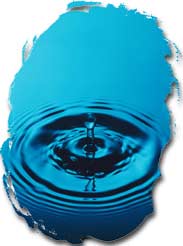Precept:
Circle Line Theory of Art
by John Bart Nelson
By Gregory Mcdonald, relevant
to his novel "Merely Players."
All right,
so Man and Nature are two different
things,and Truth and Art  are
different, too.
are
different, too.
We all know
what nature is: Nature is the circle the world makes itself,
and
the circle the moon makes in the sky, and the circle man
makes from the
ground, erect, and to the ground again, and the circle of
the seasons, and the circle of the little fish eaten by
bigger fish and the big fish into plankton to be eaten by
little fish. Nature is one big circle and the thin perimeter
is really little circles only sometimes it looks like a
straight line to a man because the circle is so big and
he can only observe for such a short time.
We all know
what truth is: Truth is the straight line a carpenter makes
when he is buidling something, the straight line up and
down in the corner of a building, and the straight line
a machine makes when its wheels are set, from youth to old
age, from ancient time to the future, logos.
Truth is all a part of the same straight line only sometimes
it looks like circles to man and sometimes it looks like
there are two or more straight lines but that is because
the straight line is so wide and man is so narrow and can
see only 360 degrees around him in a circle whether he walks
in a straight line or not. Truth is man's conceit, his idea,
his accumulation of all facts and experiences relating to
existence and his essence, both as an individual and as
a specie, his apparently uniquely needful definition of
himself aspiring infinitely in a straight line through contest
confounded by closed ended circles. It is man's need, his
perspective, his time in history and time in life that determines
his truth, despite whatever degree there is or exogenous
truth.
And we all
know what art is: Art is the straight line and the circle
together somehow, as when a pebble drops straight down into
a pond off a bridge and there is a sound and circles form
around where the straight falling pebble hits the surface
of the water, or whatever, and he submerges in nature, or
when he adheres to his own straight line and a circle together
somehow, confounding each other. It is the observation that
is the art. There is no art in the pebbles disrupting the
surface of the pond. It means nothing; it means nothing
before man; it will mean nothing after man. Only man needs
to see the irony of a straight line's being caught up in
a circle, or a circle being pressed down into a straight
line, observe and report these ironies to each other, artfully,
not in confirmation of his conceit or of nature, but simply
in observing, remembering that there is the possibility
of nothing and the possibility of something, and that he,
in his lifetime and in his place in history, is the arbiter
of choice and hope.
It is hopeful
to report that there is truth, for without it, there is
no need for nature. And there is nature, for without it,
there is no aspiring to truth. And there is irony, for without
it, there is no truth and no nature.
And there is
art.
return to top of page